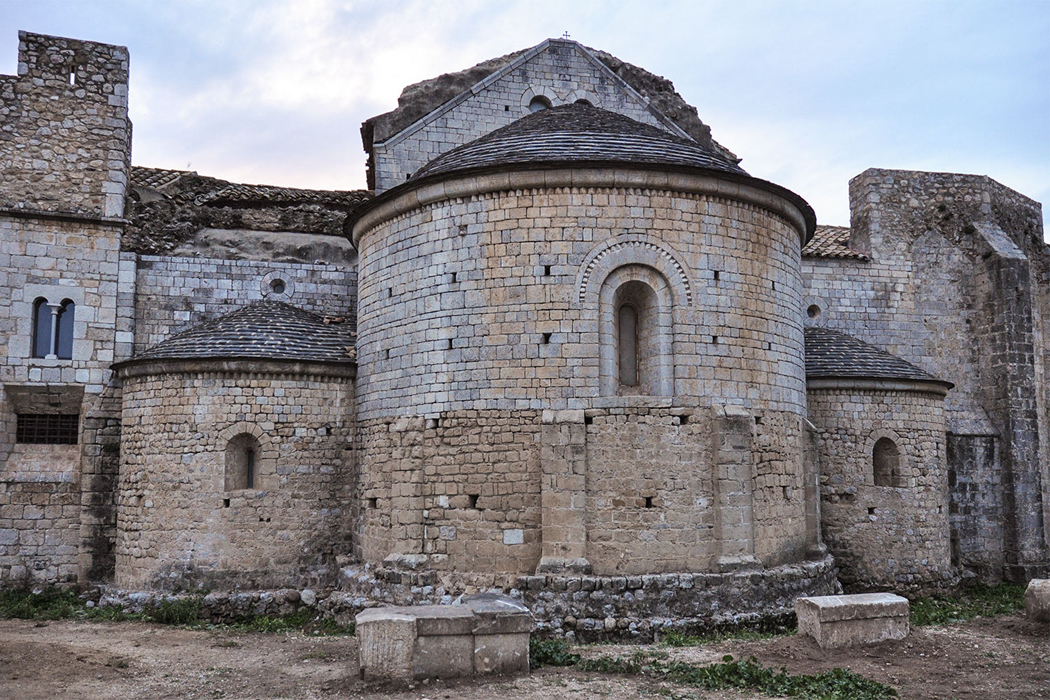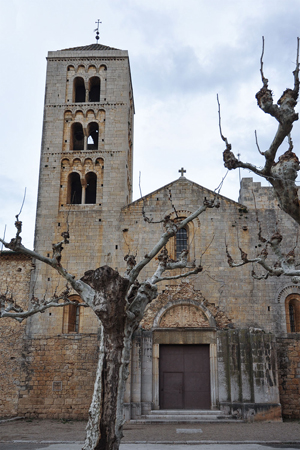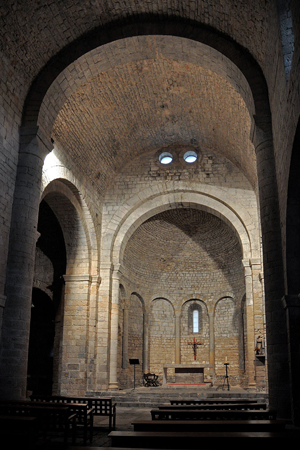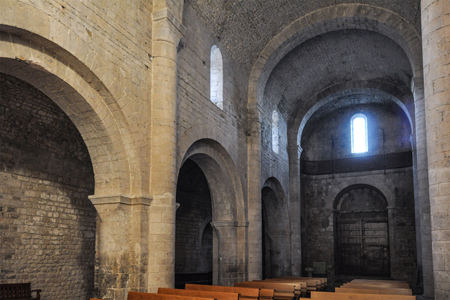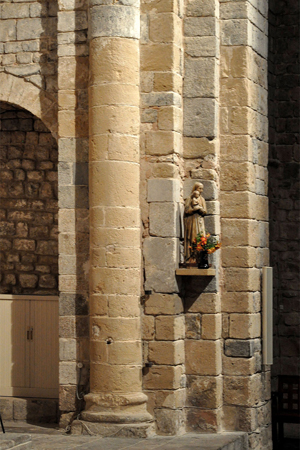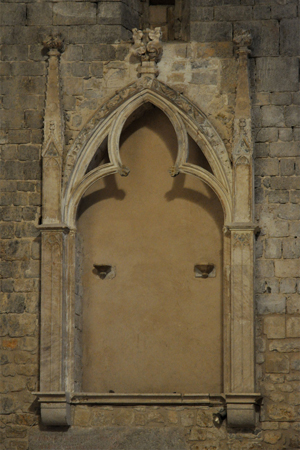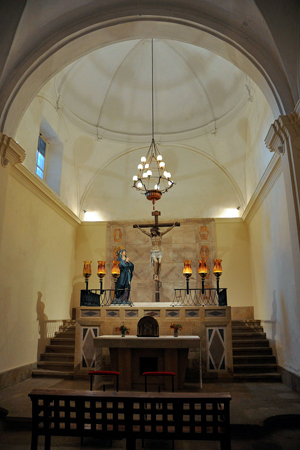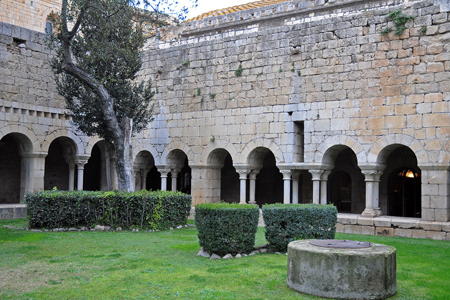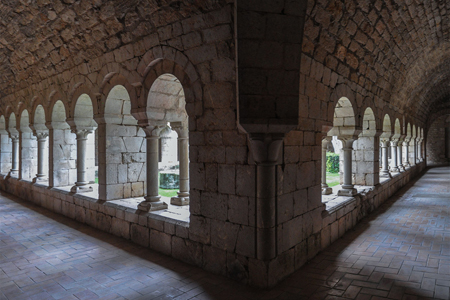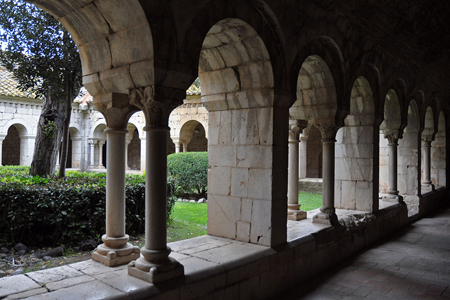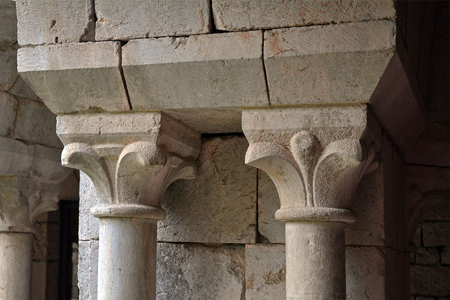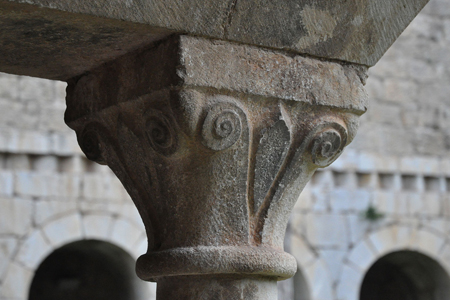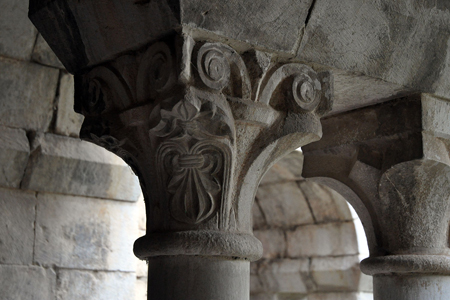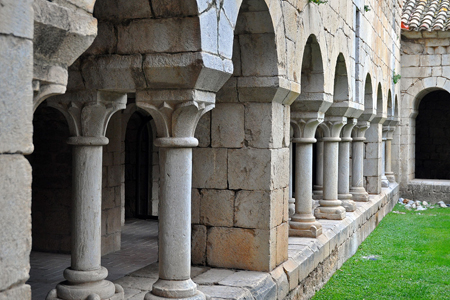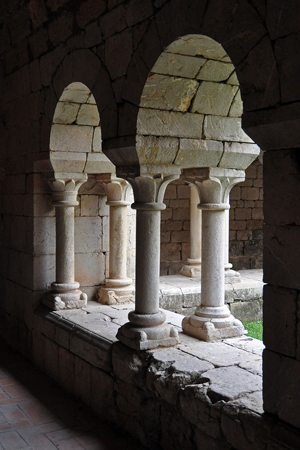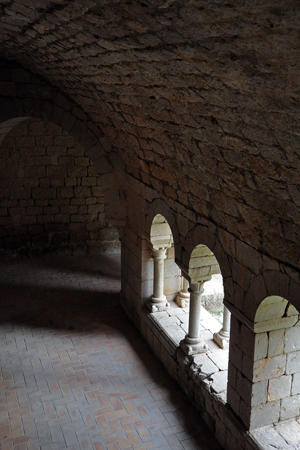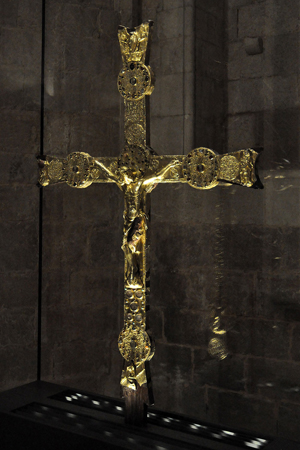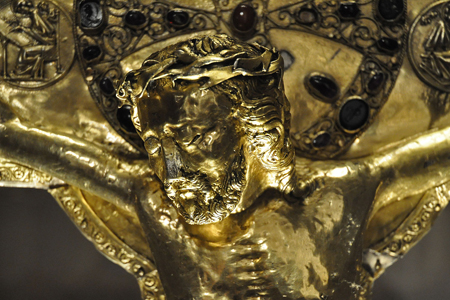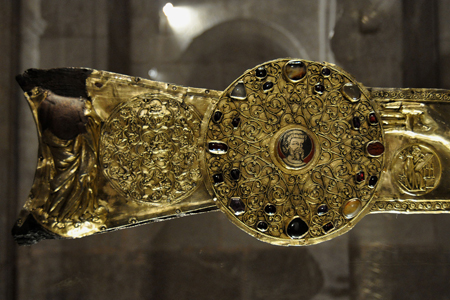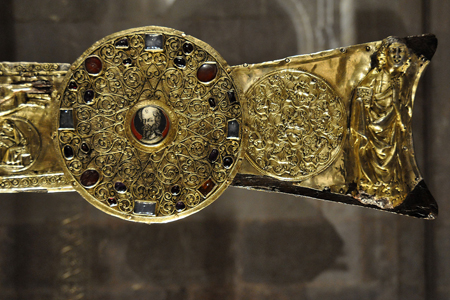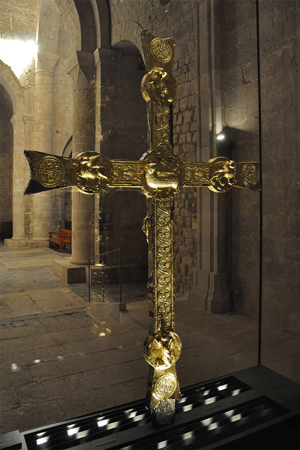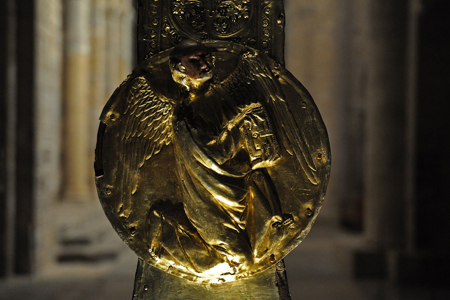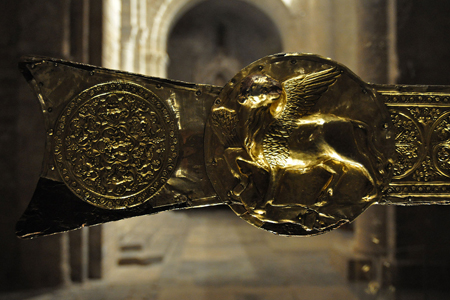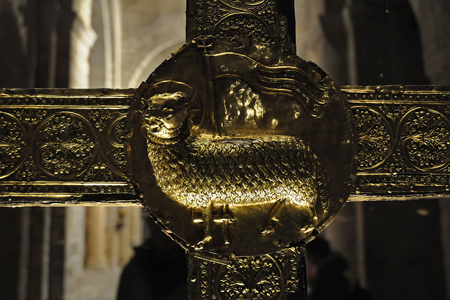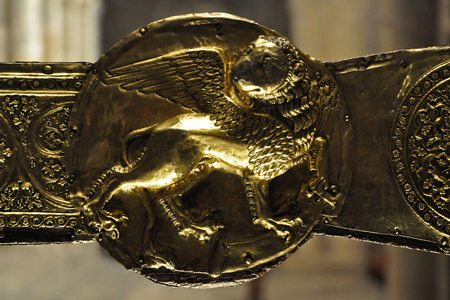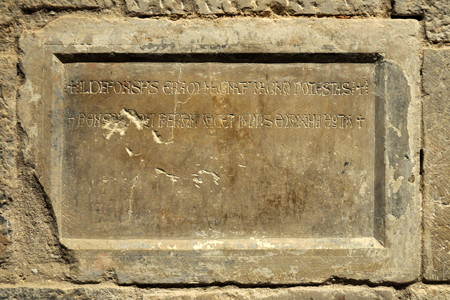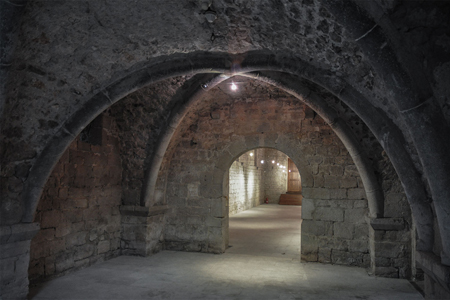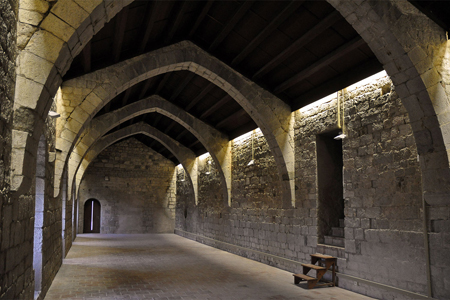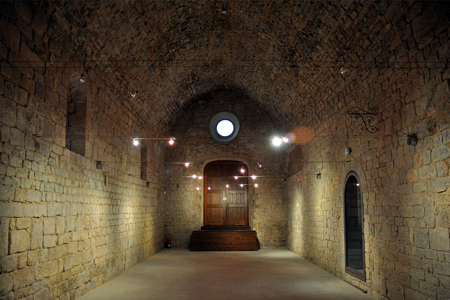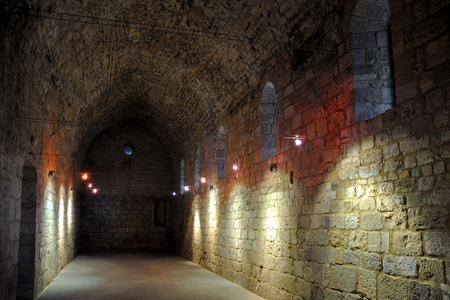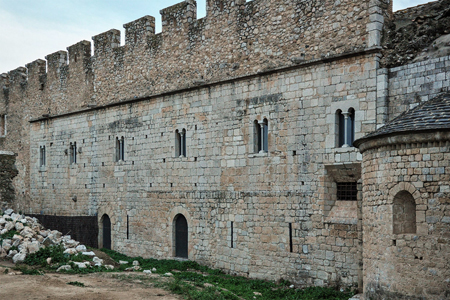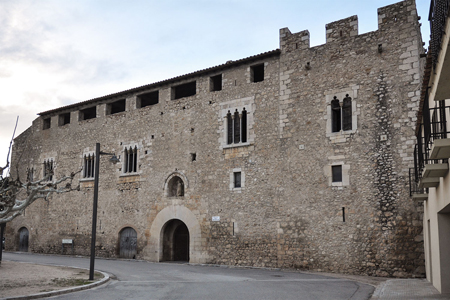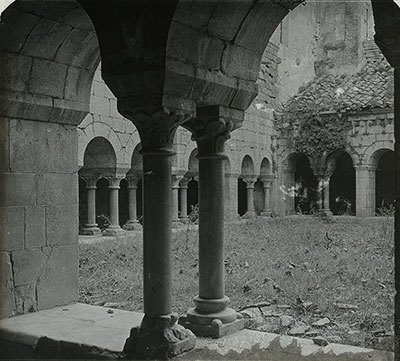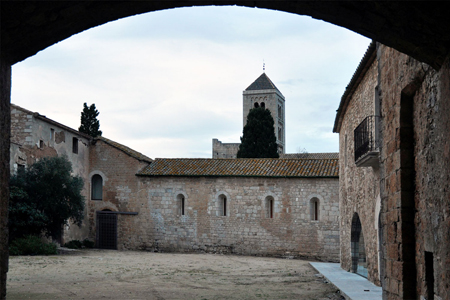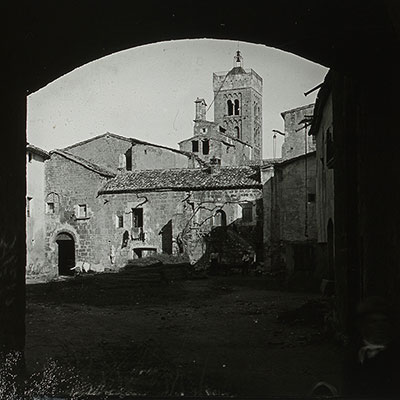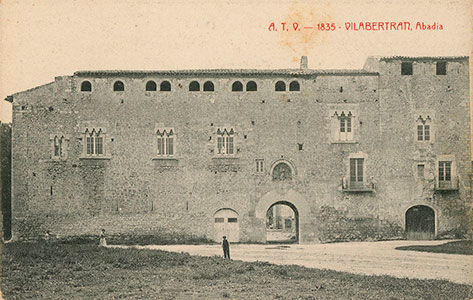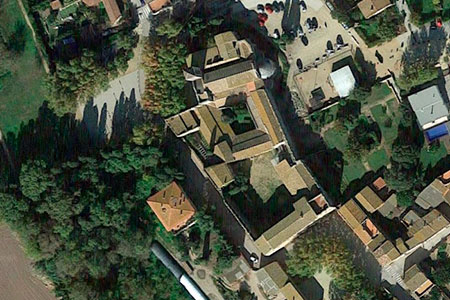The foundation of the Augustinian canonical monastery of Santa Maria de Vilabertran was the work of Pere Rigau (or Rigald), the priest in charge of an old church built in this place, of which we have news from 969. Around 1069, Pere Rigau had gathered some clerics who lived there, and at that time he received donations in favour of the community.
That monastery followed a specific canonical rule, and it is not until 1100 that there is mention of its subjection to the Rule of Saint Augustine. Soon, the old buildings were insufficient, and in 1080 Abbot Rigau began the work on a new basilica, which was consecrated twenty years later, in 1100. The monastery soon acquired prestige, and on the death of the founder (1104) he was venerated as a saint. At that time, the canons of Vilabertran participated in the foundation of other communities, such as the monastery of Santa Maria de Lledó (in 1089) when the establishment of Lledó was founded, its first prior, Juan, came from Vilabertran. Also, the monastery of Santa Maria del Camp (in Roussillon), founded in 1090 by Rigau himself, or Santa Maria de l'Om, among others.
Proof of its importance is the tombstone of Alfonso the Chaste (who died in 1196) which is preserved in the walls of the church, and which is believed to contain part of the monarch's body. It was also the scene of the wedding between James II the Just and Blanche of Naples in 1295. In the 15th century, the monastery was fortified, and the Gothic palace was built. In 1592, the canonry was secularised and became a collegiate church governed by an archpriest, with eleven canons. In 1794, the French sacked the monastery and ruin began, the archive and library were lost, and the church tombs were destroyed. The collegiate church survived until 1835, when it became a simple parish church.
The church has a basilical floor plan, that of the time of Abbot Rigau. A beautiful Gothic processional cross from the 14th century has been preserved. There is also an austere Romanesque cloister from the 12th century. The chapter house and other rooms have been preserved, but with many modifications due to having passed into the hands of private individuals. The abbey palace was built at the beginning of the 15th century, and despite its state of preservation, it is one of the best examples of this type of architecture from this period.
- ARNALL JUAN, M. Josepa (1981). Importancia de la abadía-colegiata de Vilabertrán. Annals de l’Institut d’Estudis Empordanesos. Vol. 15
- BADIA I HOMS, Joan (1990). Catalunya romànica. Vol. IX. L’Empordà II. Barcelona: Enciclopèdia Catalana
- BADIA I HOMS, Joan (1981). L’arquitectura medieval de l’Empordà. Vol. II-B. Girona: Diputació de Girona
- CANAL, José de la (1832). España Sagrada. Vol. 45. Gerona. Madrid: Collado
- GOLOBARDES VILA, Miguel (1949). El monasterio de Santa María de Vilabertran. Barcelona: Porter
- MARQUÈS, Josep M. (1991). Algunes referències documentals sobre la canònica i la col·legiata de Vilabertran (1300-1835). Annals de l’Institut d’Estudis Empordanesos. Vol. 24
- MARQUÈS, Josep M. (1993). Canònica de Santa Maria de Vilabertran. Barcelona: Curial
- MARQUÈS, Josep M. (1995). Escriptures de Santa Maria de Vilabertran (968-1300). Figueres: I. Estudis Empordanesos
- MONSALVATJE Y FOSSAS, Francisco (1904). Los monasterios de la diócesis gerundense. Noticias históricas. Vol. XIV. Olot: Juan Bonet
- PLADEVALL, Antoni i altres (2002). Santa Maria de Vilabertran, 900 Anys. Figueres: I. E. Empordanesos
- RIU-BARRERA, Eduard (2003). L’art gòtic a Catalunya. Arquiectura III. Dels palaus a les masies. Enciclopèdia Catalana. Barcelona
- STYM-POPPER, Sylvain (1959). Congrès Archéologique de France. Vol. 117. Catalogne. París: S. F. Archéologie
